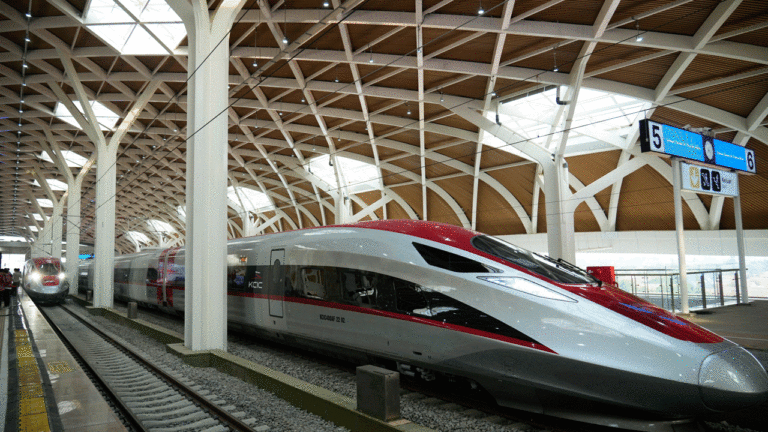Indonesia Unveils Southeast Asia’s First High-Speed Railway
JAKARTA, Indonesia — In a historic moment, Indonesian President Joko Widodo officially inaugurated Southeast Asia’s first high-speed railway on Monday. This ambitious project, a cornerstone of China’s Belt and Road initiative, promises to significantly slash travel time between the cities of Jakarta and Bandung.
This railway, spanning 142 kilometers (88 miles), faced its fair share of setbacks and cost escalations. Some skeptics questioned its commercial viability. Nevertheless, the Transportation Ministry granted its official operating license, marking a turning point for this $7.3 billion endeavor, predominantly funded by China.
The railway, a joint effort between an Indonesian consortium of state-owned companies and China Railway International Co. Ltd, will link the bustling capital of West Java province, Bandung, with Jakarta. It’s expected to reduce the journey from three hours to a mere 40 minutes, while its utilization of electrical energy will contribute to lower carbon emissions.
Widodo affectionately named this groundbreaking achievement “Whoosh,” denoting “timesaving, optimal operation, reliable system” in the Indonesian language. During the opening ceremony, he lauded this modernization of mass transportation for its efficiency and environmental friendliness.
“By venturing into the unknown, we gain confidence and opportunities for learning, ultimately enhancing our human resources and national independence,” the President added.
In a show of support, Widodo, along with other dignitaries, embarked on a test ride from Halim in eastern Jakarta to Bandung’s Padalarang station, covering a distance of about 30 kilometers (18 miles). Notably, the train boasts speeds of up to 350 kph (217 mph).
China Railway’s commitment to transferring its technology to Indonesia holds promise for the future production of high-speed trains domestically. Preceding the inauguration, a two-week-long free public trial by PT KCIC allowed the public to experience this marvel firsthand.
The genesis of this venture dates back to 2016, with an initial target for operations in 2019. Land disputes, environmental concerns, and the COVID-19 pandemic caused substantial delays and increased costs from the original estimate of 66.7 trillion rupiah ($4.3 billion) to 113 trillion rupiah ($7.3 billion).
The trains have been adapted to Indonesia’s tropical climate and equipped with safety measures for earthquake, flood, and other emergencies. With a capacity of 601 passengers, the 209-meter (685-foot) train is set to transform travel in the region.
Ticket prices were still pending confirmation, but estimates suggested fares ranging from 250,000 rupiah ($16) for second-class seats to 350,000 rupiah ($22.60) for VIP accommodations. Passengers heading to downtown Bandung will need to catch a feeder train from the Padalarang station, adding an extra 20 minutes to their journey, at an estimated cost of about 50,000 rupiah ($3.20).
The rail agreement, signed in October 2015, saw China secure the project over Japan. China Development Bank provided 75% of the funding, with the remaining 25% derived from the consortium’s resources.
This railway forms a pivotal segment of a planned 750-kilometer (466-mile) high-speed network that will traverse four provinces on Indonesia’s primary island of Java, culminating in the country’s second-largest city, Surabaya.
As China strengthens its role as a global economic powerhouse, it emerges as a prominent source of foreign direct investment in Southeast Asia. Amid ongoing challenges from the United States and its allies, China continues to expand its trade with ASEAN countries, and infrastructure projects like this railway hold considerable significance.
In a related development, a semi-high-speed railway, connecting China to Laos, was inaugurated in December 2021. This $6 billion infrastructure project, largely financed by China, links the southeastern Chinese city of Kunming with Vientiane, the capital of Laos. Further plans call for a high-speed train route extending through Thailand and Malaysia down to Singapore.

